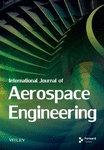Influence of Geometric Parameters on Intake Performance of 3D Ramp-Type Scramjet Inlet
Abstract
The methods based on the assumption of inviscid flow are typically used for the initial design of the scramjet inlet geometry, but the presence of a viscous boundary layer can degrade the validity of the results and lead to nonoptimal operation. This study explored the design space of three-dimensional ramp-type scramjet inlet geometry and investigated the intake performance including the viscous effect based on computational fluid dynamics. The baseline scramjet inlet was defined, and Reynolds averaged Navier–Stokes (RANS) analysis was performed to identify the basic flow structure and the intake performance. The major geometric parameters of the inlet were defined, and the one-factor-at-a-time (OFAT) method was applied to the baseline geometry to investigate the changes in intake performance according to changes in each geometric parameter. The variations of the intake performance as a function of multiple geometric parameters are also examined through the surrogate model generated for the response surface of the intake performance parameters. The combinations of geometric parameters were sampled by using Latin hypercube sampling, RANS analysis was performed for sampled points, and the surrogate model was generated using ordinary kriging. The overall tendency of intake performance from the response surfaces was compared to observation from OFAT analysis. The optimal inlet geometries were explored by selecting appropriate objective functions and applying the genetic algorithm-based multiobjective optimization. Several optimal solutions were selected from the resulting Pareto front, and their intake performance was evaluated.
Conflicts of Interest
The authors declare no conflicts of interest.
Open Research
Data Availability Statement
The data that support the findings of this study are available from the corresponding author upon reasonable request.




